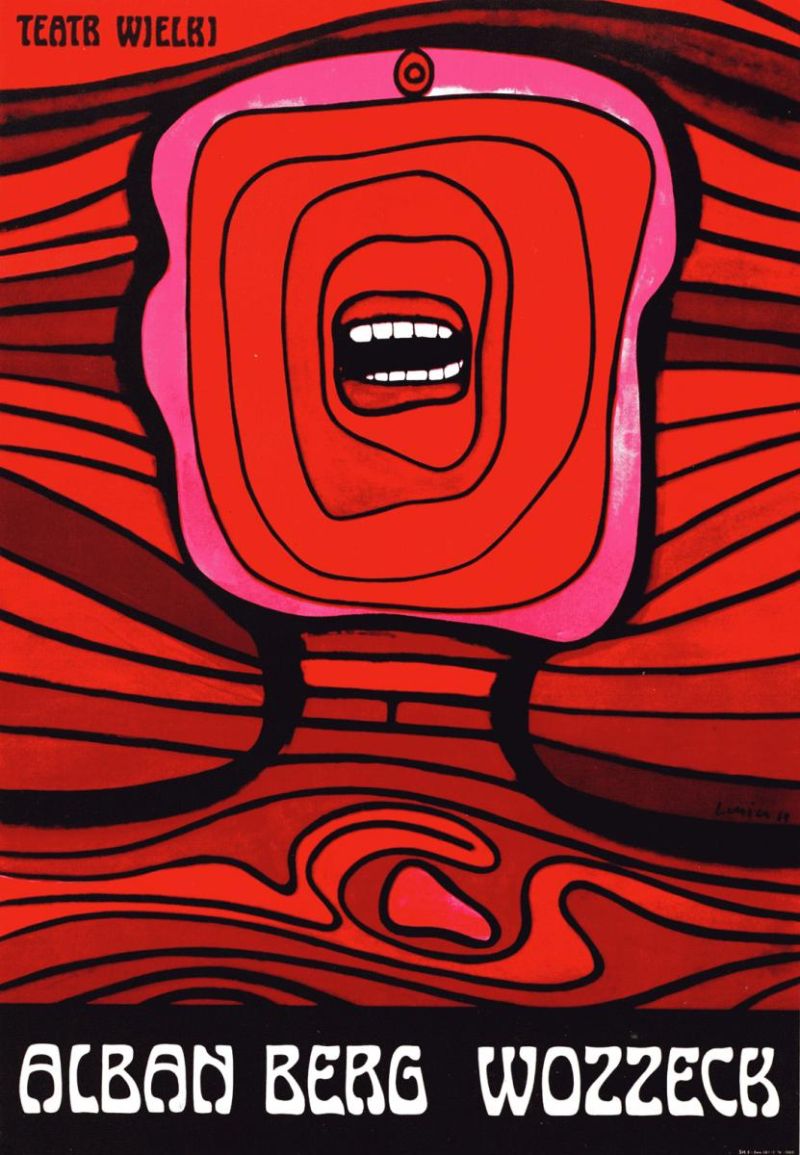Polish poster art in post-war Germany
Mediathek Sorted





















![ill. 22: Tomasz Sarnecki, Solidarność ill. 22: Tomasz Sarnecki, Solidarność - W samo poludnie [High noon], 4 June 1989](/sites/default/files/styles/width_100_tiles/public/assets/images/abb22.jpg?itok=ASCM67H8)
![ill. 23: Magazine ‘Jenseits der Oder’ [Beyond the Oder], Issue 6 ill. 23: Magazine ‘Jenseits der Oder’ [Beyond the Oder], Issue 6 - Published by the German Society for Cultural and Economic Exchange with Poland. Due to the unresolved border status from the perspective of the FRG, the title of the magazine was a provocation.](/sites/default/files/styles/width_100_tiles/public/assets/images/abb23.jpg?itok=xaW1FoEX)
![ill. 24: Jan Lenica, Wizyta starszej pani [A visit from an elderly lady] ill. 24: Jan Lenica, Wizyta starszej pani [A visit from an elderly lady] - Announcement of a theatre performance](/sites/default/files/styles/width_100_tiles/public/assets/images/abb24.jpg?itok=a4ssK6p6)




As can also be seen from the list, exhibitions in West Germany were held wherever possible: in galleries, museums and art halls as well as in hotel and theatre foyers, city libraries and department stores.[10] The spectrum of organizers and organisers, which included not only cultural institutions but also student initiatives and private collectors, like two examples from Darmstadt, was correspondingly heterogeneous:
In June 1964, the local student body in Darmstadt organized an exhibition at the Technical College, which was reviewed not only by the Darmstadt-based student newspaper, but also by the local press and the Frankfurter Allgemeine Zeitung.[11] The introductory lecture was given by the renowned and energetic Warsaw academy professor and poster artist Józef Mroszczak (1910-1975), who was a guest professor at the Folkwang School of Design in Essen (I shall return to this later) and in Darmstadt. The audience was very taken by "his chivalrous appearance and [the] elegance of his lecture".[12]
A few months later, in October 1964, the Darmstadt department store Henschel & Ropertz joined the market (now the Henschel fashion house) and enhanced its sales of ready-made goods with "masterpieces of Polish poster art": in this case, with posters from the private collection of the journalist, Hans-Joachim Orth.[13] (Fig. 6-7)
What kind of posters did the West German public see at the exhibitions? Posters for cultural events, i. e. plays, films, exhibitions, concerts, opera and circus posters made up the majority of the total, thereby turning Polish cultural posters into the epitome of Polish poster art. Political posters, on the other hand, were, unsurprisingly, the exception rather than the rule in the exhibitions and were usually limited to rather discreet and uncompromising designs for First of May or for the Polish national holiday on 22nd July (fig. 8). Tourist posters, which existed in Poland in large numbers (e. g. the well-known posters of the airline LOT), and occupational safety posters, which were widespread in Poland, only played a marginal role at the West German exhibitions.
Alongside from the old masters Henryk Tomaszewski (1914-2005) and Józef Mroszczak, Roman Cieślewicz (1930-1996) and Jan Lenica (1928-2001) were among the most popular and most exhibited Polish poster artists in West Germany in the 1960s. Lenica's poster for Alban Berg's opera "Wozzeck" became an icon of Polish poster art and is still included in every anthology. (Fig. 9-14)
Jan Lenica is also perhaps the Polish poster artist who has most left his mark on the collective German memory, if not by name, then by his unmistakable, concise formal language. As early as the early 1960s, he developed his psychedelic and art nouveau Pop Art look from interlocking forms, and this became his trademark. (Fig. 15-17)
[10] However this was not specific to Polish poster exhibitions. Presentations of art actions and exhibitions in non-museum locations were in general very popular.
[11] Darmstädter Studentenzeitung No. 71, July 1964, p. 18; Darmstädter Tageblatt, 12.6.1964, p. 12; Darmstädter Echo, 12.6.1964, p. 14; FAZ, 17.6.1964, p. 28. A digital version of the Darmstädter Studentenzeitung has been put online by the ASTA archive at the TU Darmstadt: http://astarchiv.ulb.tu-darmstadt.de/405/ (consulted on 29.03.2017).
[12] Darmstädter Echo, 12.6.1964, p. 14
[13] It was closely linked with the Deutschen Gesellschaft für Kultur- und Wirtschaftsaustausch mit Polen (cf. no. 5), which will be referred to later.























































































